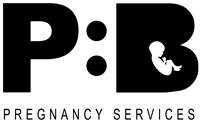Breastfeeding issues usually happen in the first days or weeks after your birth. However, they can also occur as the baby grows. Our lactation specialist provides all you need to know on breastfeeding, problems that can arise and how we can help below.
Shallow Latch
In the early days, you may be struggling with issues of a shallow latch. This is where the baby is unable to get an optimum amount of breast tissue in the mouth and so is unable to drain all of the breasts adequately. As the baby grows, baby may sleep more and the delay in the feeds means that milk remains in the breasts longer and cause issues.
Mastitis
This is a really common breastfeeding challenge. Mastitis is broken down into: ‘mast’ – breast, ‘itis’ – inflammation; inflammation of the breast. This can present as a red lump, heat to the breast tissue and increasing swelling, making it uncomfortable for the mother and difficulties breastfeeding.
Why does Mastitis happen?
Mastitis happens because milk removal is ineffective and the breast isn’t able to be drained effectively of milk. The milk backs up and remains in the breast longer than it should do. Our bodies then respond to this by rushing to our defense and causing redness, swelling, and heat to try and tackle the problem itself. The swelling then leads to a reduced ability to remove the milk from the breast, which further worsens the problem.
What will I experience with Mastitis?
At this point you may be experiencing one or more blocked ducks, and you may even feel a wedge-shaped lump, which is an entire lobe that is blocked. It’s important to know that things can progress quickly, but you don’t necessarily need antibiotics straight away.
Initially you may just present with a bruise sensation in the breast or tenderness when you brush it. Then you might find that a red area appears on the skin and perhaps you are able to feel a lump. Lastly, what will happen is if you’re not able to remove the blockage, you can progress to the flu-like symptoms of headache, fatigue, and bodily aches.
If you do act quickly within those first 12 to 24 hours, even if you have the fever, you can resolve the symptoms yourself at home. However, if you do become very unwell, you must seek medical attention as soon as possible by your GP or by 111 or emergency services.
How can I help myself at home?
Remove the milk from the breast
The main thing you need to do is remove the milk from the breast. That needs to be either by the baby themselves or by using a pump, if the baby won’t or you’re unable to latch the baby on.
What you really want to be focusing on is getting as deep a latch as possible in order to drain the breast so that there’s more breast tissue in the mouth and therefore more milk is able to be removed. If you, for example, have a blockage on the outside of your breast and you normally feed in the cross-cradle position, you could try moving the baby into what we call the rugby hold and getting baby to feed in this position.
Use baby’s chin to massage the area
What also is helpful is that the baby’s chin can massage the area, the blockage, whilst the baby is draining them out from the breast. So massage is also a really helpful tool to get the milk flowing out of the breast. Make sure to do this whilst you’re feeding or pumping.
Warm moist flannel
Another tool on top of this is to use a warm, moist flannel, for example, on the area to bring blood flow to the area, sooth the discomfort, and help aid milk flow. So you can also think about doing this after having a shower or even in the shower or the bath, using some shower gel will just help to reduce the friction when you’re massaging, which is going to reduce the trauma to the breast tissue, but it’s all helping to get that milk flowing and get that milk out of the breast.
Dangle feeding for Mastitis
Another trick that you can try is what we call dangle feeding. You want to be angling your breast so it is coming from above, and you will want to lay the baby on the bed and lean over your baby.
This works really well because gravity is in play, so it’s going to help to drain the milk from the breast. You can also use medication to help with the inflammation. Ibuprofen is good as long as you’re not pregnant, allergic, or otherwise it’s contra-indicated for you. This is usually good to take if you are in alot of pain and cannot feed or massage the area effectively.
Nutrition, hydration and sleep
When you’re dealing with problems like blocked ducts and mastitis, you really need to be ensuring that you’re staying well-hydrated, resting as much as you can, and taking nutritious food. So essentially, you need to be abandoning chores and taking you and your baby back to bed, resting and feeding and being fed and watered because your body needs all its energy to be focusing on tackling the problem of the blockage so that it can stop it in its tracks and prevent it from worsening.

Read up more on Catherine Levick our Lactation Specialist
Make sure to identify the cause
Whilst you’re using all these techniques to remove the milk from the breast, you need to be identifying what was the cause? Was it that your baby slept longer and so the milk was in your breasts longer than it usually would be and caused that reaction, or is it because of the shallow latch?
If you go back to basics and try and get your baby to have a deeper latch and that’s effective, then that’s great. But if you are having problems working it out or you’re unable to get your baby to latch deeper to overcome these issues, then please seek breastfeeding support to help you with that. What you don’t want is to resolve it for it then to reoccur. If you can’t identify any cause, then again, see specialist support.


